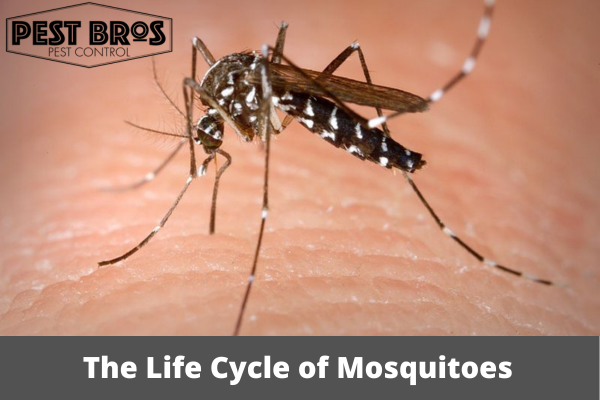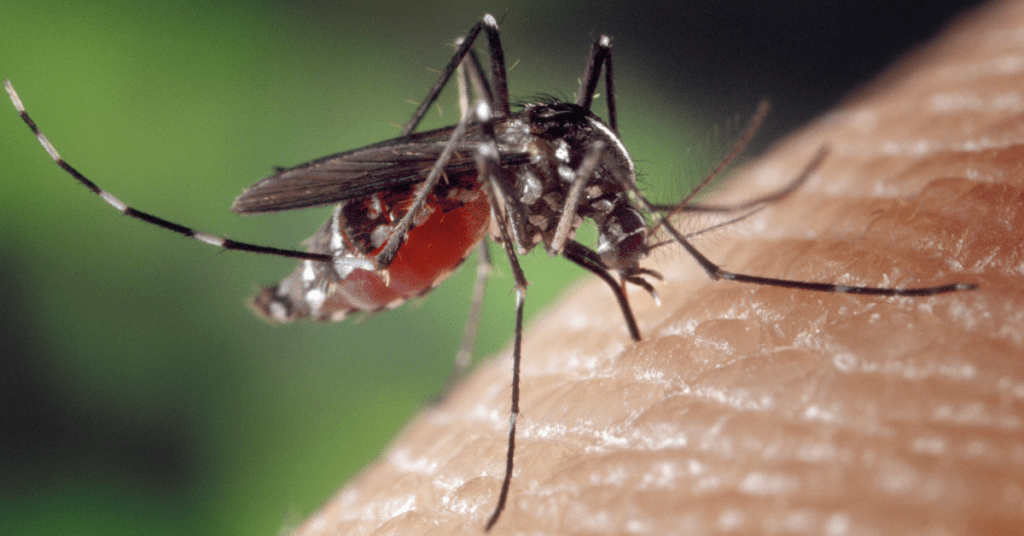

The Life Cycle of Mosquitoes: Disrupting Breeding Habits for Effective Control
Mosquitoes, those pesky little insects that seem to have an uncanny ability to ruin outdoor gatherings and make you slap yourself in annoyance, have a fascinating life cycle. To successfully control mosquito populations, it’s essential to understand their life cycle so that we can interrupt their breeding patterns. In this blog, we’ll delve into the various stages of their life cycle and explore mosquito management strategies to control these bloodsucking pests.


The Four Stages of the Mosquito Life Cycle
Egg Stage
The mosquito life cycle starts when the female mosquito lays eggs in stagnant or slow-moving water bodies like ponds, ditches, or water-filled containers. A female mosquito can lay many eggs in rafts that float on water. The egg stage duration depends on temperature and humidity, affecting egg development.
Larval Stage
Mosquito eggs hatch into larvae, commonly known as “wrigglers,” which feed on tiny aquatic organisms and organic debris in the water. They have a tube-like structure called a siphon for breathing and undergo multiple molts during their 1-2 week development.
Pupal Stage
Mosquito larvae transform into pupae, known as “tumblers,” for metamorphosis. Pupae do not eat; their primary purpose is to undergo changes and become adult mosquitoes. This stage typically lasts a few days and marks the final step before adulthood.
Adult Stage
Adult mosquitoes emerge from the water’s surface, expanding and hardening their wings to fly. They primarily feed on nectar, but pregnant females require a blood meal for egg development. Female mosquitoes can transmit diseases like malaria and Zika virus through blood-feeding, posing a threat to human health.
Disrupting Mosquito Breeding Habits for Effective Control
Now that we understand the mosquito life cycle let’s explore strategies to disrupt their breeding habits and control mosquito populations:
Eliminate Standing Water
Eliminating mosquito breeding grounds is the best method for controlling mosquito populations. Regularly inspect your property and remove or empty any containers, old tires, or other objects that can collect water. Keep gutters clean and repair any leaks to prevent water accumulation.
Use Larvicides
In areas where standing water is challenging to eliminate, larvicides can treat water sources and kill mosquito larvae before they become adults. These environmentally friendly chemicals are available in various forms, including tablets, granules, and briquettes.
Maintain Water Features
If you have decorative water features like ponds or fountains, consider using biological controls such as mosquito-eating fish (e.g., gambusia) or adding mosquito dunks containing Bacillus thuringiensis israelensis (BTI) to prevent mosquito breeding.
Install Screens and Nets
Protect your home from adult mosquitoes by installing screens on windows and doors. Use mosquito nets to protect yourself from bites when camping or sleeping outdoors.
Repellents and Insecticides
Apply insect repellents on exposed skin and clothing to deter mosquitoes. Insecticides can treat outdoor areas or as fogging treatments in high mosquito activity regions.
Conclusion
Understanding the mosquito life cycle and implementing effective control strategies is crucial in the battle against these pesky bloodsuckers. By disrupting their breeding habits and taking proactive measures, we can significantly reduce mosquito populations and the risks associated with mosquito-borne diseases. At The Pest Bros, we specialize in comprehensive mosquito control solutions tailored to your needs. Don’t let mosquitoes ruin your outdoor activities – contact us today to learn how we can help you enjoy a mosquito-free environment.




